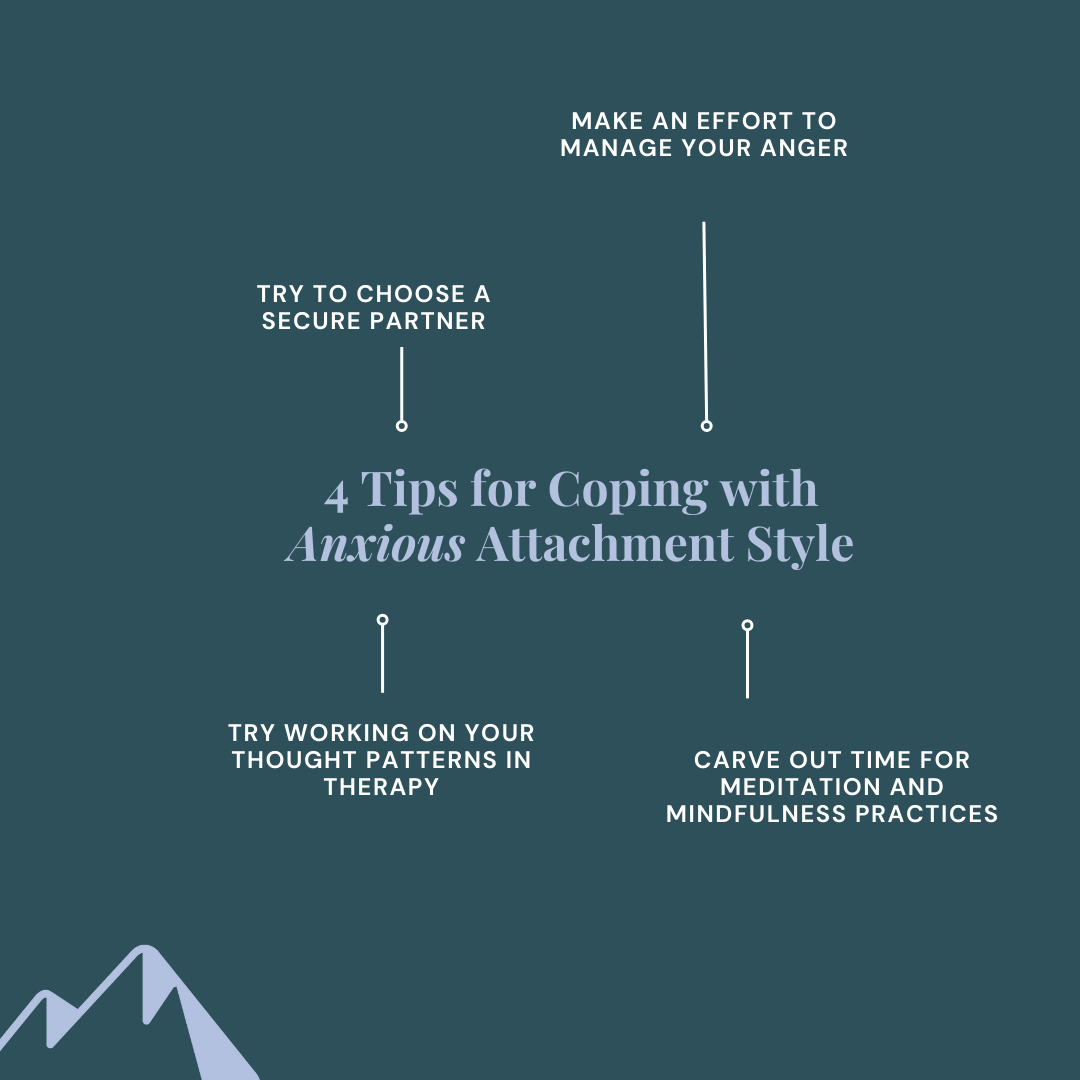Our attachment styles are developed before we even know it. According to psychiatrist and psychoanalyst John Bowlby, an infant’s early relationship with their caregivers forms the way this child will approach social interactions and relationships throughout life. As babies, we develop a deep emotional bond with the person responsible for our caretaking. Secure attachment develops when a baby’s caretaker responds to their needs with warm, attentive, consistent behavior. Inconsistent behavior in response to a child’s emotional needs, misattunement and emotional distance, and preoccupation with the child’s life, are some of the risk factors for the development of an anxious attachment style in children. Even well meaning parents can inadvertently foster an anxious attachment style in their child.
There are some tell tale signs of anxious attachment in adulthood. If relationships tend to occupy a lot of your energy and mind space, you desire intense closeness in your relationships and fear that your partner doesn’t want to be as close as you do, are very sensitive to minor fluctuations in your partner’s behavior, and you take things your partner does very personally and become emotionally disregulated easily- you might have an anxious attachment style. If you’re uncertain about your attachment style you can take the Experience in Close Relationships (ECR) questionnaire for more information. If you have determined that you have an anxious attachment style, this article may be helpful to you. Just because you have an anxious attachment style doesn’t mean you can’t develop more security over time.
Here are four tips for being in relationships when you have an anxious attachment style.
Tip 1: Try to choose a secure partner
Partnering with someone who has a more secure attachment style is best for folks with an anxious attachment style. Secure people are more likely to understand their partner’s needs and help them co-regulate during times of stress. Secure partners also tend to be more forgiving and able to engage in meaningful dialogue when a conflict occurs. A secure person will likely avoid engaging in avoidant behaviors or “game playing” that are major triggers for anxious people.
Tip 2: Make an effort to manage your anger
Before you’re able to manage your anger, you have to know what makes you angry. Identifying triggers for anger in your relationship is the first step. Having an awareness of what triggers you will give you the opportunity to take a step back and notice that something is triggering you or that a potential trigger may be coming. Once you have identifies your triggers you can communicate with your partner in a more effective way. If you encounter a trigger for anger some helpful phrases you can use with your partner include: “I’m feeling hurt and angry and I need some time to cool down and work through my emotions right now”, “Can you just give me a hug and sit with me for a moment while I process how I’m feeling?” and “I know you didn’t intend to anger me but I’m very angry right now and I don’t want to lash out at you.” The power of pause is needed here, creating some separation between your feeling and your reaction will help you avoid saying something you may later regret.
Tip 3: Carve out time for meditation and mindfulness practices
A regular meditation practice helps you deal with stress more effectively. Sitting in meditation can help you identify what’s been bothering you and come to conclusions that you might not otherwise come to when moving quickly through life without designated times to slow down. Practicing mindfulness helps you stay present and deal with what is happening in the here and now rather than ruminating on what has already happened or anxious fixating on what might happen.
Tip 4: Try working on your thought patterns in therapy
Working with a trained therapist can help you identify cognitive distortions and maladaptive schemas you might think are perfectly healthy. A therapist can help you practice cognitive reframing, a technique that teaches you to challenge how you think. With a therapist you can identify early attachment wounds, learn reparenting techniques, identify triggers, and develop healthy ways to cope with inevitable triggers in life.
Having an anxious attachment style can be difficult but it is not a lifelong sentence, necessarily. Through utilizing these tips you can learn how to develop a more secure attachment style and find joy and fulfillment in relationships.
Briana Ryan, LCSW
